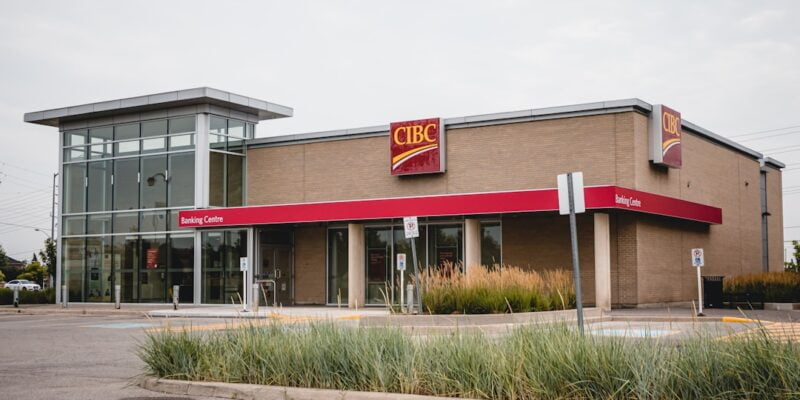
Building a Strong Future: How Construction Asset Finance Can Help Your Business Grow
Construction asset finance is a crucial aspect of the construction industry that allows businesses to acquire the necessary equipment and machinery to carry out their projects. It involves obtaining financing for the purchase or lease of assets such as excavators, cranes, trucks, and other construction equipment. Understanding construction asset finance is essential for construction companies as it can provide numerous benefits, including improved cash flow, access to better equipment, tax benefits, and reduced risk. By utilizing construction asset finance effectively, businesses can grow and expand their operations.
Key Takeaways
- Construction asset finance is a type of financing that allows businesses to acquire and use assets for construction projects.
- The benefits of construction asset finance include improved cash flow, increased flexibility, and the ability to acquire assets without large upfront costs.
- Construction asset finance can help businesses grow by providing access to the latest equipment and technology, allowing for increased productivity and efficiency.
- There are different types of construction asset finance available, including leasing, hire purchase, and asset-based lending.
- To choose the right construction asset finance option, businesses should consider their specific needs, budget, and long-term goals.
Understanding Construction Asset Finance: What You Need to Know
Construction asset finance refers to the financing options available for construction companies to acquire the necessary assets for their projects. It can be in the form of loans, leases, or other financial arrangements that allow businesses to obtain the equipment they need without having to pay the full cost upfront. This type of financing is particularly beneficial for construction companies as it allows them to conserve their working capital and allocate it to other areas of their business.
Construction asset finance works by providing businesses with the funds needed to purchase or lease equipment. The financing is typically secured against the assets themselves, which means that if the business fails to make payments, the lender has the right to repossess the equipment. This provides security for the lender and allows them to offer more favorable terms and interest rates.
Any construction company can benefit from construction asset finance, regardless of its size or stage of development. Whether it is a small startup looking to acquire its first set of equipment or a large established firm looking to upgrade its machinery, construction asset finance can provide the necessary funding. It allows businesses to access high-quality equipment that they may not be able to afford otherwise, enabling them to compete effectively in the industry.
The Benefits of Construction Asset Finance for Your Business
1. Improved cash flow: One of the primary benefits of construction asset finance is improved cash flow. By spreading out the cost of equipment over time, businesses can preserve their working capital and use it for other essential expenses such as payroll, materials, and overhead costs. This is particularly important for construction companies that often face cash flow challenges due to the nature of their projects.
2. Access to better equipment: Construction asset finance allows businesses to access the latest and most advanced equipment in the market. This is crucial for staying competitive in the industry and delivering high-quality projects. By having access to better equipment, construction companies can increase their productivity, efficiency, and overall performance.
3. Tax benefits: Construction asset finance can provide tax benefits for businesses. Depending on the financing option chosen, companies may be able to deduct the interest paid on the financing from their taxable income. This can result in significant savings and reduce the overall cost of acquiring equipment.
4. Reduced risk: Construction asset finance can help reduce the risk associated with owning equipment. By leasing or financing equipment instead of purchasing it outright, businesses can avoid the risk of obsolescence or depreciation. They can also transfer the risk of maintenance and repairs to the lender or lessor, allowing them to focus on their core operations.
How Construction Asset Finance Can Help You Grow Your Business
| Benefits of Construction Asset Finance | Description |
|---|---|
| Increased Cash Flow | Construction Asset Finance can provide you with the necessary funds to purchase equipment and machinery, allowing you to conserve your cash flow for other business expenses. |
| Improved Efficiency | By having access to the latest equipment and machinery, you can improve your construction processes and complete projects more efficiently, leading to increased productivity and profitability. |
| Flexible Repayment Options | Construction Asset Finance offers flexible repayment options, allowing you to choose a repayment plan that suits your business needs and cash flow. |
| Tax Benefits | Construction Asset Finance can provide you with tax benefits, such as depreciation and interest deductions, which can help reduce your overall tax liability. |
| Access to New Technology | Construction Asset Finance can provide you with access to the latest technology and equipment, allowing you to stay competitive in the industry and attract new clients. |
1. Increased productivity: By having access to better equipment through construction asset finance, businesses can significantly increase their productivity. Upgraded machinery and tools can help streamline processes, reduce downtime, and improve overall efficiency. This allows construction companies to complete projects faster and take on more work.
2. Ability to take on larger projects: With construction asset finance, businesses can acquire the necessary equipment to take on larger and more complex projects. This opens up new opportunities for growth and expansion, as companies can bid on projects that they would not have been able to handle without the right equipment.
3. Improved reputation: Having access to modern and well-maintained equipment through construction asset finance can enhance a company’s reputation in the industry. Clients are more likely to trust and choose a construction company that has the necessary resources to deliver high-quality projects on time and within budget.
4. Expansion opportunities: Construction asset finance can also provide businesses with the flexibility to expand their operations. Whether it is opening new branches, entering new markets, or diversifying their services, having access to financing for equipment can support these growth initiatives.
The Different Types of Construction Asset Finance Available
1. Hire purchase: Hire purchase is a type of construction asset finance where the business pays for the equipment in installments over a fixed period. Once all payments have been made, ownership of the equipment is transferred to the business. This option is suitable for companies that want to own the equipment at the end of the financing term.
2. Finance lease: A finance lease involves leasing the equipment from a lender for a fixed period. The business pays regular lease payments and has the option to purchase the equipment at the end of the lease term for a predetermined price. This option is suitable for businesses that want to use the equipment for a specific period without committing to ownership.
3. Operating lease: An operating lease is similar to a finance lease but typically has a shorter term. The business leases the equipment for a fixed period and returns it to the lender at the end of the lease term. This option is suitable for businesses that require equipment for a short-term project or do not want to commit to long-term ownership.
4. Asset refinance: Asset refinance involves using existing owned assets as collateral to obtain financing. The business can release equity from its assets and use it to fund new equipment purchases or other business expenses. This option is suitable for companies that already own valuable assets and want to leverage them to obtain additional funding.
How to Choose the Right Construction Asset Finance Option for Your Business
When choosing a construction asset finance option, there are several considerations to keep in mind:
1. Financial implications: Consider the financial implications of each option, including interest rates, fees, and repayment terms. Compare the total cost of each option to determine which one is the most cost-effective for your business.
2. Ownership preferences: Determine whether your business wants to own the equipment at the end of the financing term or if leasing is a more suitable option. Consider the long-term needs and goals of your business when making this decision.
3. Equipment requirements: Assess the specific equipment needs of your business and ensure that the financing option you choose can provide the necessary funding for those assets. Consider factors such as equipment lifespan, maintenance requirements, and technological advancements.
4. Cash flow considerations: Evaluate how each financing option will impact your cash flow. Consider whether your business can comfortably make the required payments without jeopardizing other essential expenses.
The Application Process for Construction Asset Finance
The application process for construction asset finance typically involves the following steps:
1. Research and preparation: Research different lenders and their financing options to find the one that best suits your business needs. Gather all the necessary documentation required for the application process, including financial statements, tax returns, and proof of identity.
2. Application submission: Submit your application to the chosen lender along with all the required documentation. Provide accurate and detailed information about your business, its financials, and the equipment you wish to finance.
3. Credit assessment: The lender will assess your creditworthiness by reviewing your financial statements, credit history, and other relevant information. They may also conduct a site visit or request additional documentation.
4. Approval and documentation: If your application is approved, you will receive an offer from the lender outlining the terms and conditions of the financing. Review the offer carefully and seek legal advice if necessary. Once you accept the offer, you will need to sign the necessary documentation to finalize the financing.
5. Funding and equipment acquisition: After the documentation is complete, the lender will release the funds to you or the equipment supplier. You can then acquire the equipment and begin using it for your projects.
The timeline for approval can vary depending on the lender and the complexity of the application. It is advisable to start the application process well in advance to ensure that you have sufficient time to complete all the necessary steps.
Tips for Successful Construction Asset Finance Management
To effectively manage construction asset finance, consider the following tips:
1. Proper budgeting: Create a detailed budget that includes all the costs associated with the equipment, including financing payments, maintenance, insurance, and repairs. This will help you allocate your resources effectively and ensure that you can meet your financial obligations.
2. Regular maintenance of equipment: Properly maintain and service your equipment to prolong its lifespan and minimize repair costs. Regular maintenance can also help prevent breakdowns and downtime, ensuring that your projects stay on schedule.
3. Monitoring cash flow: Continuously monitor your cash flow to ensure that you have sufficient funds to make your financing payments. Implement effective cash flow management strategies such as invoicing promptly, negotiating favorable payment terms with clients, and managing expenses efficiently.
4. Communication with lender: Maintain open and regular communication with your lender to address any concerns or issues that may arise during the financing term. Inform them of any changes in your business circumstances or equipment needs to ensure a smooth relationship.
Common Mistakes to Avoid When Using Construction Asset Finance
To avoid potential pitfalls when using construction asset finance, be mindful of the following mistakes:
1. Overextending your budget: Do not commit to financing payments that are beyond your means. Carefully assess your financial situation and ensure that you can comfortably make the required payments without jeopardizing other essential expenses.
2. Failing to read the fine print: Thoroughly review all the terms and conditions of the financing agreement before signing it. Pay attention to details such as interest rates, fees, repayment terms, and any penalties for early termination or default.
3. Not considering long-term costs: Consider the long-term costs associated with owning or leasing the equipment. Factor in maintenance, repairs, insurance, and potential obsolescence when evaluating the overall cost of the financing option.
4. Choosing the wrong option for your business: Selecting the wrong financing option can have significant implications for your business. Carefully assess your needs, goals, and financial situation to determine which option is the most suitable for your business.
How to Maximize the Benefits of Construction Asset Finance for Your Business
To maximize the benefits of construction asset finance, consider the following strategies:
1. Proper planning and budgeting: Develop a comprehensive plan that outlines your equipment needs, financing options, and budget. This will help you make informed decisions and ensure that you are utilizing construction asset finance effectively.
2. Regular maintenance of equipment: Implement a proactive maintenance schedule to keep your equipment in optimal condition. Regular maintenance can help prevent breakdowns, extend equipment lifespan, and minimize repair costs.
3. Choosing the right option for your business: Carefully evaluate the different financing options available and choose the one that aligns with your business needs and goals. Consider factors such as ownership preferences, equipment requirements, and cash flow implications.
4. Communication with lender: Maintain open lines of communication with your lender throughout the financing term. Inform them of any changes in your business circumstances or equipment needs to ensure a smooth relationship.
The Future of Construction Asset Finance: Trends and Predictions
The future of construction asset finance is likely to be influenced by several trends and predictions:
1. Technological advancements: The construction industry is experiencing rapid technological advancements, including automation, artificial intelligence, and digitalization. These advancements are likely to impact construction asset finance by increasing the demand for more advanced and specialized equipment.
2. Increased competition: The construction industry is becoming increasingly competitive, with more players entering the market. This is likely to drive innovation in construction asset finance, with lenders offering more flexible and tailored financing options to attract and retain customers.
3. Changes in regulations: Regulatory changes, such as stricter environmental standards and safety regulations, may impact the types of equipment that construction companies can finance. Lenders may need to adapt their offerings to align with these regulations and support sustainable practices in the industry.
4. Predictions for the future of construction asset finance: The future of construction asset finance is expected to be characterized by increased digitization, streamlined application processes, and more flexible financing options. Lenders may leverage technology to offer faster approvals, online application platforms, and real-time monitoring of equipment performance.
Construction asset finance plays a crucial role in the success and growth of construction businesses. By understanding construction asset finance and utilizing it effectively, businesses can improve their cash flow, access better equipment, enjoy tax benefits, and reduce risk. It allows companies to increase productivity, take on larger projects, improve their reputation, and explore expansion opportunities. By choosing the right financing option, managing it properly, and avoiding common mistakes, businesses can maximize the benefits of construction asset finance and position themselves for future success in the industry.
FAQs
What is construction asset finance?
Construction asset finance is a type of financing that provides funds for the purchase of construction equipment, machinery, and vehicles. It is a form of asset-based lending that allows construction companies to acquire the necessary assets to complete their projects.
How does construction asset finance work?
Construction asset finance works by providing funds to construction companies to purchase the equipment and machinery they need for their projects. The lender will typically require the assets to be used as collateral for the loan, and the loan will be repaid over a set period of time with interest.
What types of assets can be financed through construction asset finance?
Construction asset finance can be used to finance a wide range of assets, including excavators, bulldozers, cranes, trucks, and other heavy equipment. It can also be used to finance smaller assets such as tools and other construction supplies.
What are the benefits of construction asset finance?
The benefits of construction asset finance include access to the equipment and machinery needed to complete construction projects, improved cash flow, and the ability to spread the cost of the assets over time. It can also help construction companies to avoid the upfront costs of purchasing equipment outright.
Who can apply for construction asset finance?
Construction asset finance is typically available to construction companies of all sizes, from small contractors to large construction firms. The specific eligibility requirements will vary depending on the lender and the type of financing being offered.
What factors are considered when applying for construction asset finance?
When applying for construction asset finance, lenders will typically consider factors such as the creditworthiness of the borrower, the value of the assets being financed, and the overall financial health of the construction company. The specific criteria will vary depending on the lender and the type of financing being offered.













